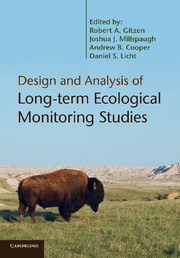Monitoring Ecological Change
The state of ecosystems, biological communities and species are continuously changing as a result of both natural processes and the activities of humans. In order to detect and understand these changes, effective ecological monitoring programmes are required. This book offers an introduction to the topic and provides both a rationale for monitoring and a practical guide to the techniques available. Written in a nontechnical style, the book covers the relevance and growth of ecological monitoring, the organizations and programmes involved, the science of ecological monitoring and an assessment of methods in practice, including many examples from monitoring programmes around the world. Building on the success of the first edition, this edition has been fully revised and updated with two additional chapters covering the relevance of monitoring to the reporting of the state of the environment, and the growth of community based ecological monitoring.
- Provides information on the theory and practice of effective ecological monitoring
- Draws on case-studies and examples of monitoring from around the world
- Written in a non-technical and informal style
Reviews & endorsements
'… excellent and well written book … the second edition of Monitoring Ecological Change is the equal of the first in accessibility, clarity and comprehensiveness. … This highly technical and often complex subject matter is rendered clear and accessible … this is a timely and useful addition to the literature. Spellerberg has managed to improve on an already impressive piece of work and I am sure it will be read, reread, and used by undergraduate and postgraduate students, practitioners, and fellow academics.' Biologist
'I recommend this book as introductory teaching tool mainly for the undergraduate and graduate students and also for research fellows and practitioners as it offers a profound insight into the science and practice of ecological monitoring, considering different levels of biodiversity and including examples from a wide range of terrestrial and aquatic ecosystems.' Phytocoenologia
Product details
August 2005Hardback
9780521820288
410 pages
253 × 180 × 34 mm
0.98kg
77 b/w illus. 48 tables
Available
Table of Contents
- Foreword
- Preface
- Acknowledgements
- 1. Ecological monitoring
- 2. Environmental monitoring programmes and organizations
- 3. State of the environment reporting and ecological monitoring
- 4. Biological scales and spatial scales in ecological monitoring
- 5. Biological indicators and indices
- 6. Diversity and similarity indices
- 7. Planning and designing ecological monitoring
- 8. Community-based ecological monitoring
- 9. Ecological monitoring of species and biological communities
- 10. Ecological monitoring and environmental impact assessments
- Appendix 1. Acronyms used in the text
- Appendix 2. The 1992 Convention on Biological Diversity
- References
- Index.











